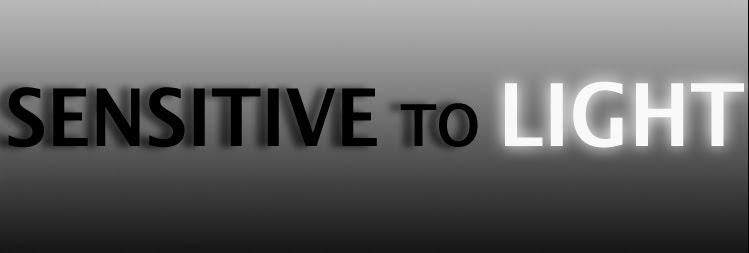I went through a short [Edit, LONG] period of time that I spent trying to inject... something... into my prints. I love inkjet printing with a passion, it's one of my favorite processes. It's really in many respects the perfect output method for modern photographs. With a color calibrated monitor and a tidy color workflow, both in post and in printing, it is incredibly precise. A part of me feels a little bit reactionary to all of this modern photographic perfection. Some of my favorite photographs are not perfect, not exact, not sterile. This probably hearkens back to some of my early experiences with hand coated processes and even darkroom printing. I love them for the un-exactness. Sorry Ansel, but the zone system gives me headaches. I just don't think logarithms and algorithms have much of a place in the dark room. I think printing should come from a warmer place, like the Heart.

Me with a laser print collage
Some of the prints I admire the most are not "technically" perfect.
The Pond - Moonlight, by Edward Steichen is a great example. Steichen printed first in Platinum and then added layers of gum bichromate to give the slight impression of color in the image. Gum bichromate is one of the more difficult proccesses to acheive technical perfection with, but it is apparent that Steichen's use of this process was not about technical perfection. It is about mood, an effervecence that can't be replicated with silver. By the way, Steichen's masterpiece sold recently for 2.9 million dollars.
The Starn Twins are two of my favorite photographers right now too, I love their exploration of materials and techniques, and their overall philosophy towards printing.
When I was thinking about changing directions, I looked around me towards what was cheap and familiar. That old laser printer sitting in the corner? Really? Yes!

Leaf, laser print
For a series of prints of leaf negatives that I was working on, laser worked pretty darn good! The leaves were photographed digitally and processed to make them negative and give them a high contrast, and then printed using, yes, the good old laser printer. The printed page has some pretty interesting qualities, some imperfections yes, some resolution issues, yes, but over all they work. As a bonus when printing a large number of prints, laser was much, much faster then working with inkjet, thanks to its speedy thermal process. This allowed for printing multiple sheet collages in a relatively short amount of time. I created a series of 300 leaf prints like the one above over a few days.

Fern, collage of laser prints

Maple Leaf, collage of laser prints
I enjoyed this process so much that I even went on to use if for one of my final projects. I don't expect to start a laser printer revival with this one, but I would implore creative printers to think beyond simply defaulting to inkjet!





















